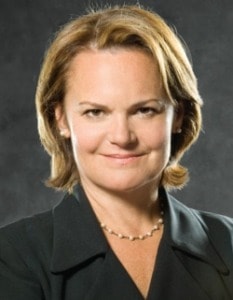 WHILE IN SPAIN FOR A WEDDING THIS PAST JULY, I attended a performance by La Fura dels Baus, Barcelona’s internationally revered theatre company. The piece, called M.U.R.S., is an immersive multimedia production that took place inside Castell de Monjuïc, a picturesque 17th-century open-air fortress overlooking Barcelona’s harbor. It was the perfect locale for what is billed as the first “smart show” in history!
WHILE IN SPAIN FOR A WEDDING THIS PAST JULY, I attended a performance by La Fura dels Baus, Barcelona’s internationally revered theatre company. The piece, called M.U.R.S., is an immersive multimedia production that took place inside Castell de Monjuïc, a picturesque 17th-century open-air fortress overlooking Barcelona’s harbor. It was the perfect locale for what is billed as the first “smart show” in history!
In order to participate, audiences needed to download an app on their smartphones. They were then guided by the app through the four color-coded sections of the performance installation—representing four main quarters of the “smart” city of the future: the security zone (indicating that a more secure world is possible), the wellness zone (a healthier world is possible), the eco zone (a more sustainable world is possible) and the money/gaming zone (a more ludic world is possible). Upon entering the site, the crowd found its way naturally into four groups and obediently followed the instructions delivered to them on their phones.
Exercise moves were demonstrated in the wellness area, where the M.U.R.S. app encouraged audiences to partake in a variety of physical moves. At one point, the phone screens of everyone in the money quadrant turned different colors, flashing bright solid screens of blue, red and green. An explosion, which seemed shockingly real, knocked over a structure in the security zone—after which a few people began rushing for the narrow exit, and I wondered if the spectators might charge forward en masse, causing a real emergency. The explosion led to a turn in the narrative—the focus changed to capturing terrorists responsible for the bomb—and I was later told by an observer close to the show that La Fura dels Baus’s intention was exactly that: for audience members to believe they were in the midst of a real crisis.
If you didn’t find yourself at the end of the evening overcome with a sense of urgency about what a dire situation the world is in, and about how social media and technology control how we think and live, then you could find those messages projected on a giant screen in the finale. The one that stood out most powerfully to me: “We are sheep.”
This ambitious piece, which was developed in cooperation with researchers from MIT and the Ars Electronica Futurelab, was a bold experiment that reminded me how few theatre artists have effectively explored global events and the influence of social media—particularly while using the technology itself to conduct that exploration. Here in the U.S., I think of the pioneering work being done by Whit MacLaughlin’s New Paradise Laboratories and by a handful of other artists utilizing apps and media technology in their work.
As we witness the ongoing evolution of social media and its uses, we should be increasingly reminded that we are willing participants in a system that is able, with virtually no regulation, to determine our age and preferences and then market special products to us; a system that goes even further to conduct research on our thoughts and behaviors (as Facebook was recently discovered doing); a system that can swiftly focus the masses on a particular world event, and then even more quickly abandon it. And a system that pretty much is tracking us wherever we go.
On a separate but subliminally related note, researchers at the United Kingdom’s Swansea University have discovered the algorithm that makes it possible for sheep dogs to herd sheep. They believe that this knowledge can be adapted and put to good use…in herding humans, for instance, who are trying to exit smoke-filled rooms. “We are sheep,” indeed.
The blessing that comes with today’s media revolution is our increased connectivity with each other and an exponentially increased access to news and information, tools that can contribute to more effective community organizing and increased democratization. It can facilitate speaking truth to power. The curse, broadly speaking, is that what began as a convenient way to keep up with friends and world events has become another way we are marketed to and manipulated.
American Theatre, which marks its 30th anniversary this year, plunges more deeply into the online fray with the launch this month of our exciting new website americantheatre.org. In AT’s first issue in 1984, then TCG board president Alan Schneider wrote a column about the future called “Things to Come” (April ’84). He credited designers from Yale with arming themselves with self-propelled lasers, and making sets entirely out of computerized holograms. Then he wrote:
“That caring minority which still depends on the theatre for at least a portion of its sensuous and emotional sustenance is gradually growing, and will continue to grow—if only the theatre does what it alone can do: make its audiences experience the essential nature of the living of life.”
In Barcelona, theatre carried me on digital wings through a medieval castle, postulating a future full of rich possibilities—and of danger. When life and art creatively mingle, we’re able to experience both more fully and with more immediacy. Wits like Twain and Wilde would have us believe that life, by virtue of its infinite variety, has the advantage over art. But it is the experience of art, as Schneider contends, that educates us about the essentials of how to live.

